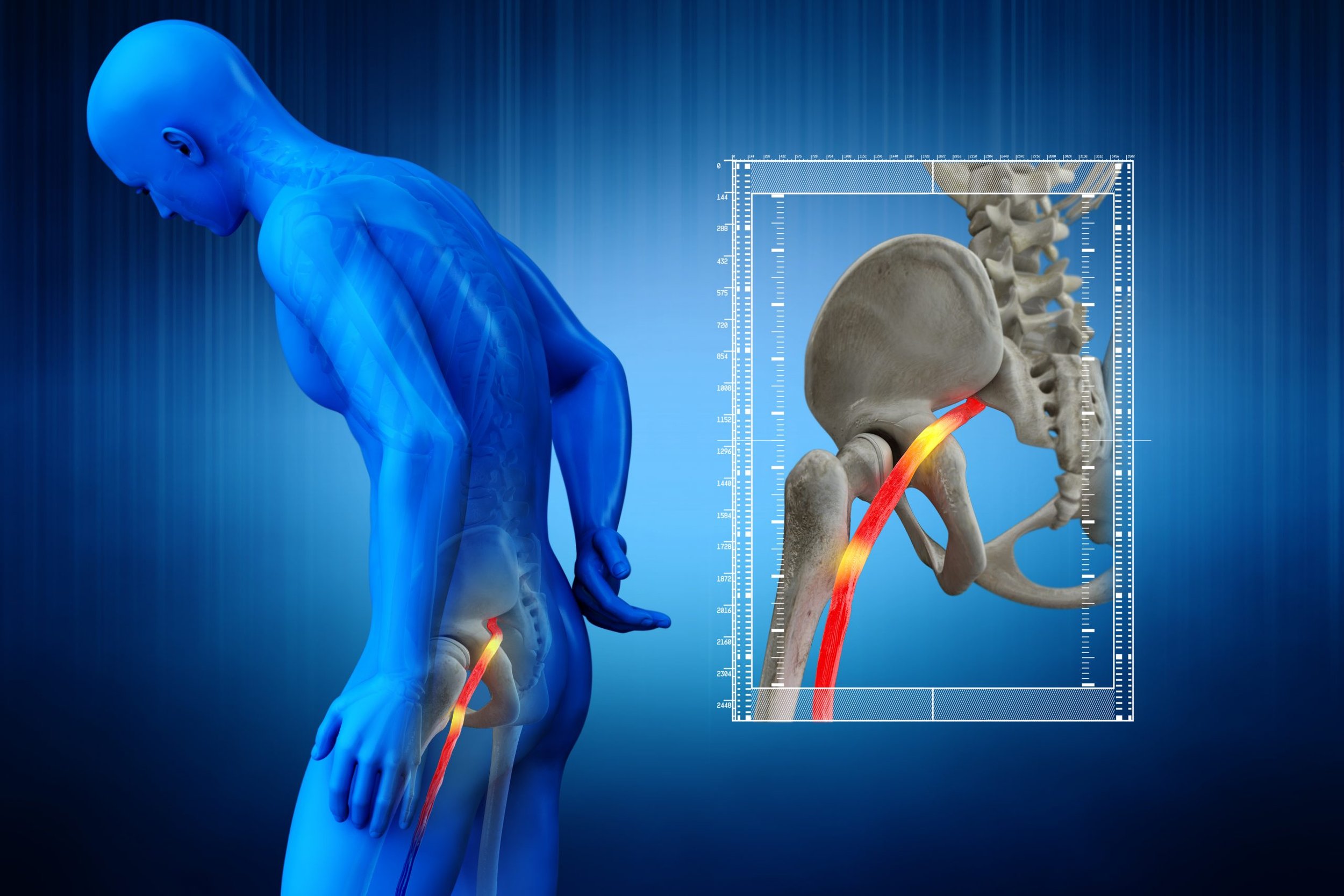Sciatic nerve pain? Start here
By: Alyssa Fontaine, LAT, ATC, CSCS
Sciatica is an irritation of the sciatic nerve, which is the largest nerve in the body. The sciatic nerve begins at the nerve root in the lower back, then travels through the hip, buttocks, and down to the hamstring. The main function of the sciatic nerve is to provide sensation to the lower back, back of the legs, and even the foot, which is why any irritation to this nerve can become so painful!
Sciatic nerve pain can be a frustrating diagnosis.. here’s some of our favorite tips!
Irritation of the sciatic nerve can occur when there is entrapment on part of the nerve. It can also occur when there is pressure on a part of the nerve, or as a result of a herniated or bulging disc in the back. Many other factors can lead to sciatica, but one of the most common contributions is improper spinal mechanics.
Sciatica is a very common condition with some of the main symptoms being lower back pain, burning or tingling down the leg, weakness or numbness in the foot, pain with sitting, and sharp shooting pain.
So that leads us to the next question- How can we manage this?
The most important step to receiving a proper diagnosis is reaching out to a healthcare professional - an orthopedic doctor, primary care doctor, spinal specialist, physical therapist, or athletic trainer.
Some of our favorite ways to decrease symptoms of sciatic include:
Strengthening your core
By strengthening your core, you are improving your spinal mechanics and allowing the lower back to accept more load. This can help to alleviate pressure on the sciatic nerve and restore better positioning!
Some of our favorite core exercises include: dead bugs, bird dogs, and planks.
Glute stretching/Hip Mobility
Your glutes are a critical component to appropriate lower back positioning! If your glutes become tight, this can put compression on the sciatic nerve itself. By increasing hip mobility, we can decrease compression to the sciatic nerve and reduce symptoms.
For mobility we recommend the pigeon stretch, and the piriformis stretch!
We also recommend strengthening your glutes to promote neutral positioning of the pelvis. Our favorites include glute bridges, clamshells, and lateral band walks!
Nerve flossing
Nerves need to be stretched just like muscles. Nerve flossing is an exercise that stretches irritated nerves to improve their range of motion and decrease pain.
The sciatic nerve is one of the largest nerves in the body, beginning at the lower back and running through our glutes and hamstrings.
4. Physical Therapy or Body Work Services
If you are unsure on where to go next in regards to your sciatica-physical therapy services are always beneficial to make sure you are safely and accurately addressing the underlying issue at hand!
Some of our favorite body work services for sciatica include;
1. Dry Needling- this will help to improve glute recruitment and decrease tightness at your lower back.
2. Assisted Stretching- this will help improve range of motion through your lower back, hips, glutes, and hamstrings allowing for the nerve to move more freely!
3. Cupping- both static and dynamic cupping will help allow for the lower and mid back to release, taking some of the pressure off the sciatic nerve.
As someone who also deals with sciatica, and lower back issues- you are not alone! I was unsure where to begin, and how to move my body in a way that felt best. At FIXXED, we will always provide a full body movement assessment, provide the most appropriate service, and send you home with follow up exercises to enhance your recovery. You can start the process by booking a Free Consultation with us in our Haverhill or Wakefield Studio today. We are here to help you thrive, and leave feeling your best!
Fixxed is a first of its kind recovery studio offering bodywork techniques to help you move and feel your best. We offer quick and effective hands-on services in a one on one setting performed by a licensed physical therapist or athletic trainer. Click HERE to book a free consultation with FIXXED!


